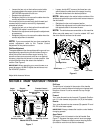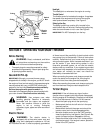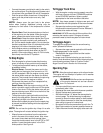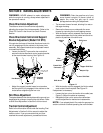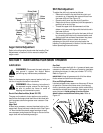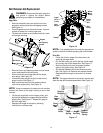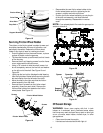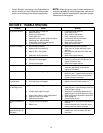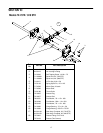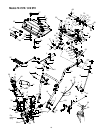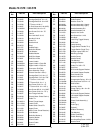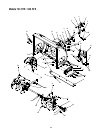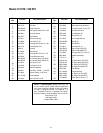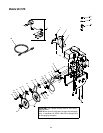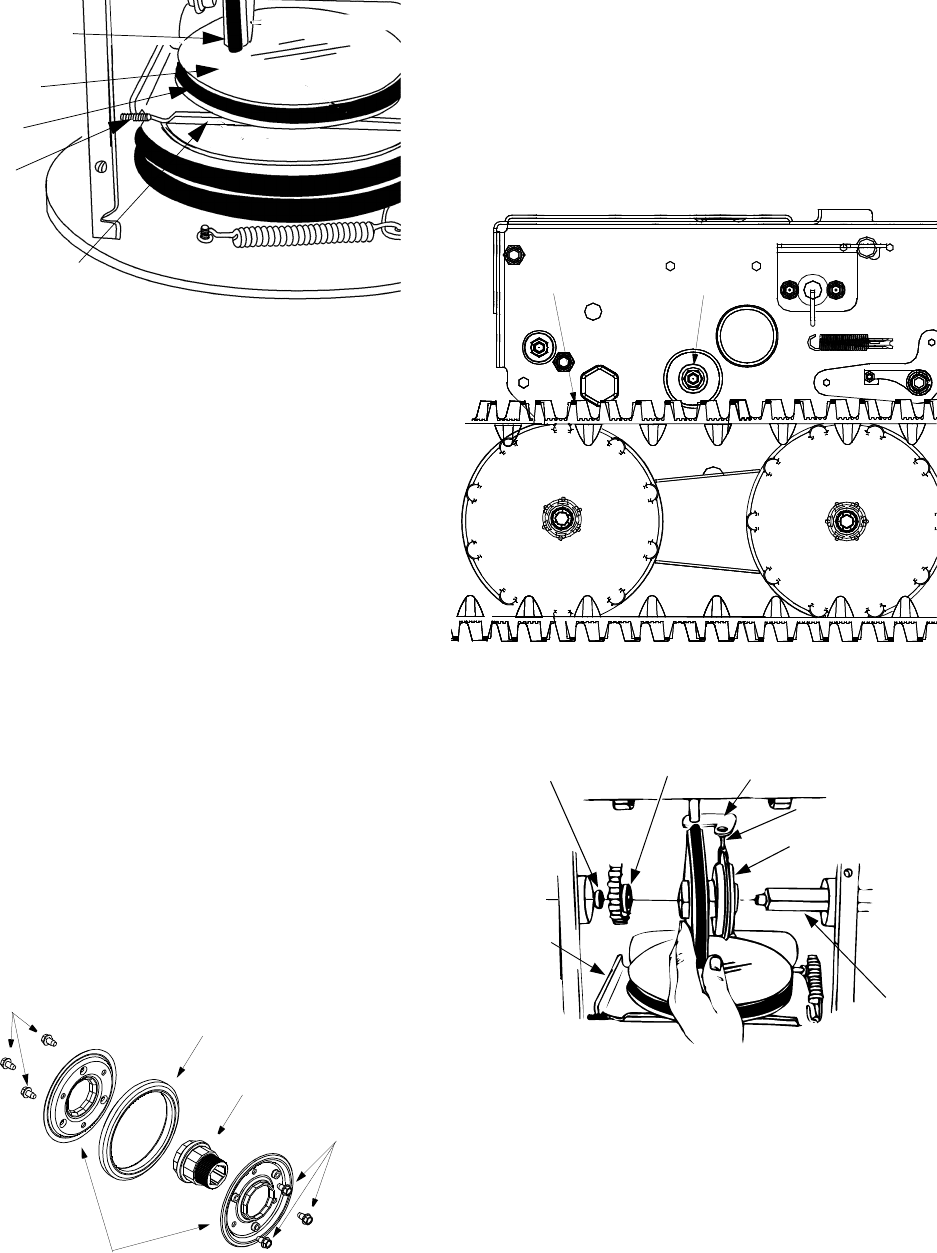
15
Figure 18
Servicing Friction Wheel Rubber
The rubber on the friction wheel is subject to wear and
should be checked after 25 hours of operation, and
periodically thereafter. Replace the friction wheel
rubber if any signs of wear or cracking are found.
• Drain the gasoline from the snow thrower, or place
a piece of plastic under the gas cap.
• Tip the snow thrower up and forward, so that it rests
on the housing.
• Remove the six self-tapping screws from the frame
cover underneath the snow thrower.
• Using a 7/8" wrench to hold the shaft, loosen, but
do not completely remove, the hex bolt and washer
on the left end of the shaft. See Figure 19 and
Figure 20.
• Lightly tap the hex bolt to dislodge the ball bearing
from the right side of frame before removing the hex
bolt and washer from the left end of the shaft.
• Move the shaft to the right and slide the friction
wheel assembly from the shaft.
• Remove the six screws from the friction wheel
assembly (three from each side). Remove the
friction wheel rubber from between the friction
wheel plates. See Figure 18
Figure 19
• Reassemble the new friction wheel rubber to the
friction wheel plates and hub, tightening the six
screws in rotation and with equal force.
• Position the friction wheel assembly up onto the pin
of the shift rod assembly, and slide the shaft
through the assembly. Reassemble in reverse
order.
NOTE: If you placed plastic film under the gas cap, be
certain to remove it.
Figure 20
Figure 21
Off Season Storage
WARNING: Never store engine with fuel in tank
indoors or in enclosed, poorly ventilated areas where
fuel fumes may reach an open flame, spark or pilot light
as on a furnace, water heater, clothes dryer, or other
gas appliance.
• Clean snow thrower thoroughly.
• Lubricate as instructed above with light oil.
Friction Wheel
Drive Plate
Drive Belt
Support Bracket
Stop Bolt
Friction Wheel Rubber
Screws
Screws
Friction Wheel Plates
Hub
Hex Bolt
Track
Washer
Spacer
Sprocket
Shift Rod
Assembly
Pin
Friction Wheel
Assembly
Support
Bracket
Shaft



